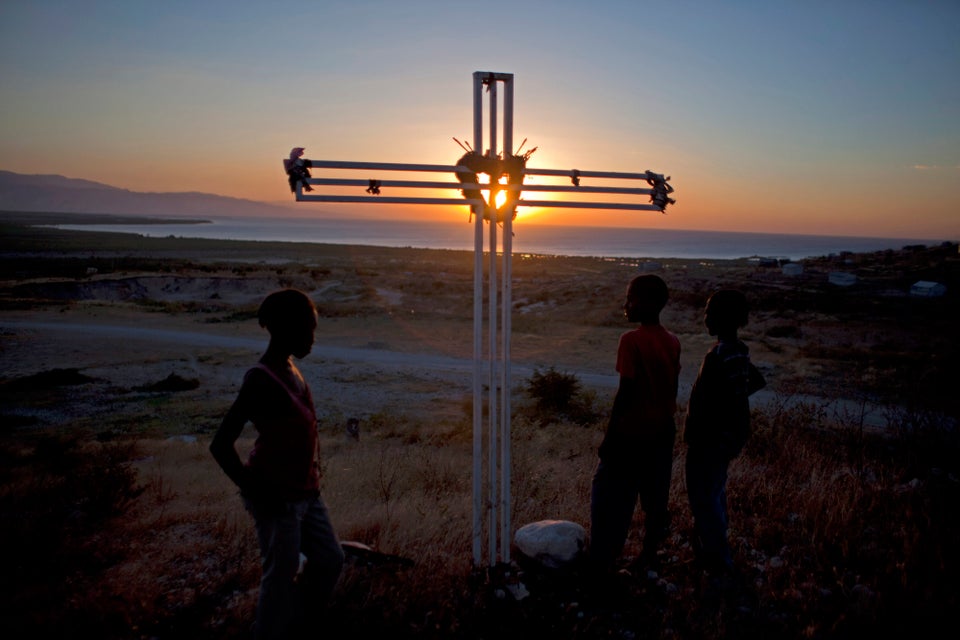Three years on, much of the conversation surrounding the Haiti earthquake recovery has centered around charities squandering money, the gains U.S. contractors made and how Haitians themselves received very little money.
But what has actually been done to rebuild?
“When you look at things, you say, ‘Hell, almost three years later, where is the reconstruction?’" Michèle Pierre-Louis, a former prime minister of Haiti, described to the New York Times. “If you ask what went right and what went wrong, the answer is, most everything went wrong. There needs to be some accountability for all that money.”
Since the 7.0 magnitude earthquake hit Haiti killing an estimated 222,570 people, major challenges remain as the country slowly rebuilds.
But rebuilding is, in fact, taking place.
More than half of the 10 million cubic meters -- enough to fill just over 4,000 Olympic -sized swimming pools -- worth of debris have been removed, and 20 percent of it has been recycled, according to a report by the International Monetary Fund.
And the American Red Cross, which has spent nearly all of its $486 million in donations, has focused its efforts this past year on establishing permanent housing.
Strides have also been made in the areas of health and education.
A $2.2 billion U.N initiative to combat cholera was recently launched and the construction of a $17 million teaching hospital in Mirebalais will employ 800 Haitians and treat 185,000 people.
The Haitian government has also committed to pay tuition for 900,000 children while donors have financed education for an additional 230,000 children, according to the World Bank.
But recovery still lags, of course.
While at least 7.5 billion of aid has been disbursed, most has gone to relief efforts that while important, are only band-aids for long-term problems, the New York Times describes.
“You cannot continue to implement stopgap measures to deal with specific short-term issues,” George Ngwa, spokesman for the U.N. Office for the Coordination of Humanitarian Affairs in Haiti told the Miami Herald. But in the country’s defense he adds, “Haiti goes from one emergency to another. Every time it appears, we are making progress. A disaster takes us back to zero — or minus.”
Check out the infographic below to see what else has been done to rebuild Haiti:

Support HuffPost
Our 2024 Coverage Needs You
Your Loyalty Means The World To Us
At HuffPost, we believe that everyone needs high-quality journalism, but we understand that not everyone can afford to pay for expensive news subscriptions. That is why we are committed to providing deeply reported, carefully fact-checked news that is freely accessible to everyone.
Whether you come to HuffPost for updates on the 2024 presidential race, hard-hitting investigations into critical issues facing our country today, or trending stories that make you laugh, we appreciate you. The truth is, news costs money to produce, and we are proud that we have never put our stories behind an expensive paywall.
Would you join us to help keep our stories free for all? Your contribution of as little as $2 will go a long way.
Can't afford to donate? Support HuffPost by creating a free account and log in while you read.
As Americans head to the polls in 2024, the very future of our country is at stake. At HuffPost, we believe that a free press is critical to creating well-informed voters. That's why our journalism is free for everyone, even though other newsrooms retreat behind expensive paywalls.
Our journalists will continue to cover the twists and turns during this historic presidential election. With your help, we'll bring you hard-hitting investigations, well-researched analysis and timely takes you can't find elsewhere. Reporting in this current political climate is a responsibility we do not take lightly, and we thank you for your support.
Contribute as little as $2 to keep our news free for all.
Can't afford to donate? Support HuffPost by creating a free account and log in while you read.
Dear HuffPost Reader
Thank you for your past contribution to HuffPost. We are sincerely grateful for readers like you who help us ensure that we can keep our journalism free for everyone.
The stakes are high this year, and our 2024 coverage could use continued support. Would you consider becoming a regular HuffPost contributor?
Dear HuffPost Reader
Thank you for your past contribution to HuffPost. We are sincerely grateful for readers like you who help us ensure that we can keep our journalism free for everyone.
The stakes are high this year, and our 2024 coverage could use continued support. If circumstances have changed since you last contributed, we hope you’ll consider contributing to HuffPost once more.
Already contributed? Log in to hide these messages.


